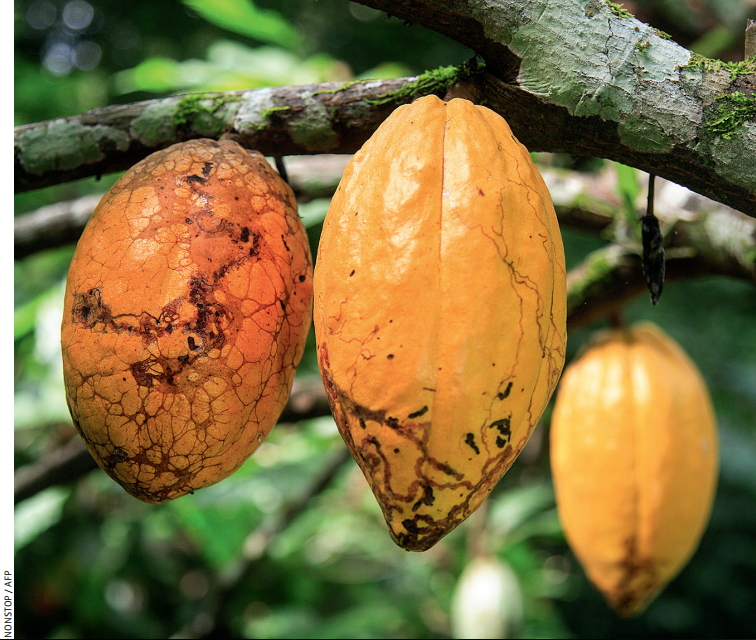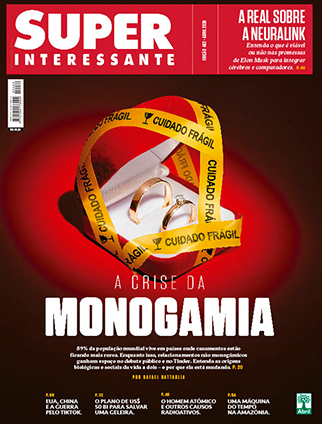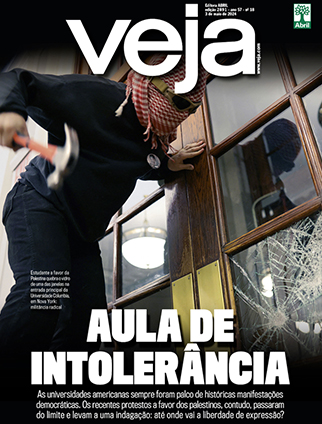Inglês: Interpretação – The history of chocolate
Centuries ago, the product was a bitter mixture drank by the Mayans and Aztecs

THE AZTECS of central Mexico attributed the creation of the cacao beans to their god Quetzalcoatl who descended from heaven on a beam of a morning star carrying a cacao tree stolen from paradise
Delicious, delectable, soothing and American. Chocolate was a New World discovery, one of the most sought-after treasures brought back to Europe from the brave new land across the Atlantic. Cacao, from which chocolate is created, is said to have originated in the Amazon at least 4,000 years ago. The cacao tree was worshipped by the Mayan civilization, who believed it to be of divine origin. Cacao is actually a Mayan word meaning ‘God Food’, hence the tree’s modern generic Latin name Theobroma cacao, meaning ‘Food of the Gods’. The word Cacao was corrupted into the more familiar ‘Cocoa’ by the early European explorers. The ancient Maya brewed a spicy, bittersweet drink by roasting and grinding the seeds of cocoa beans with maize and chili and letting the mixture ferment. This drink was reserved for use in ceremonies as well as for drinking by the wealthy and religious elite.
The Aztecs of central Mexico attributed the creation of the cacao beans to their god Quetzalcoatl who, as the legend goes, descended from heaven on a beam of a morning star carrying a cacao tree stolen from paradise. In fact, the Aztecs valued the beans so much that they used them as currency: a hundred beans bought a turkey or a slave, and taxes were paid in cocoa beans to Aztec emperors.
They prized Xocolatl well above gold and silver so much so that, when Montezuma was defeated by Cortez in 1519 and the victorious ‘conquistadors’ searched his palace for the Aztec treasury expecting to find gold and silver, all they found were huge quantities of cocoa beans. The Aztecs, like the Mayans, also enjoyed cacao as a beverage fermented from the raw beans, which again featured prominently in rituals and as a luxury available only to the very wealthy. They regarded chocolate as an aphrodisiac and their Emperor, Montezuma reputedly drank it fifty times a day from a golden goblet and is quoted as saying of Xocolatl: “The divine drink, which builds up resistance and fights fatigue. A cup of this precious drink permits a man to walk for a whole day without food”.
Xocolatl or Chocolat or Chocolate, as it became known, was brought to Europe by Cortez. By this time, the conquistadors had learned to make the drink more palatable to European tastes by mixing the ground roasted beans with sugar and vanilla (a practice still continued today), thus balancing the spicy bitterness of the brew the Aztecs drank.
(The History of Chocolate. https://www.aphrodite-chocolates.co.uk/history_chocolate.htm. Adaptado) (Vestibular UFBA 2010, adaptado)
EXERCÍCIOS – UFBA 2010 (adaptado)
1. De acordo com o texto, os astecas explicam a origem do cacaueiro como:
a) Criação do deus Quetzalcoatl, que enviou a semente do cacau por um raio de sol.
b) Invenção do imperador Montezuma, que gostava de beber chocolate todos os dias.
c) Invenção dos maias, que consideravam a semente um deus.
d) Invenção do deus Quetzalcoatl, que trouxe a semente da Amazônia.
e) Criação do deus Quetzalcoatl, que desceu do céu em um raio de uma estrela da manhã carregando um cacaueiro roubado do paraíso.
2. De acordo com o texto, é correto afirmar que:
a) Astecas e maias gostavam da bebida feita do cacau fermentado, presente principalmente em rituais.
b) Somente os astecas consideram o cacau um alimento de origem divina.
c) Somente os maias usavam o cacau como moeda.
d) Maias e astecas preparavam o chocolate com açúcar.
e) Os europeus aprenderam a apreciar o gosto apimentado do chocolate.
3. Segundo o texto, quando Cortez derrotou Montezuma, em 1519, ele esperava:
a) Conhecer os segredos da preparação do chocolate.
b) Conhecer o palácio real e as plantações de cacau.
c) Levar para a Europa mudas do cacaueiro.
d) Encontrar ouro e prata no palácio real.
e) Encontrar sementes de cacau afrodisíacas.
4. A estrutura da sentença “Chocolate […] was brought to Europe by Cortez” (último parágrafo) é um exemplo de:
a) past simple active voice.
b) past perfect active voice.
c) past simple passive voice.
d) past continuous passive voice.
e) past perfect passive voice.
5. Na frase “The cacao tree was worshipped by the Mayan civilization, who believed it to be of divine origin” (segundo parágrafo), o pronome it refere-se a:
a) Mayan.
b) cacao tree.
c) worshipped.
d) civilization.
e) origin.
6. As formas infinitivas dos verbos “brought” (primeiro pará- grafo) e “stolen” (terceiro parágrafo) são, respectivamente:
a) brought / stole.
b) bring / stole.
c) bright / steal.
d) bring / steal.
e) bring / stolen
RESPOSTAS
1. Criação do deus Quetzalcoatl, que desceu do céu em um raio de sol carregando um cacaueiro roubado do paraíso. Veja o trecho “(…) attributed the creation of the cacao beans to their god Quetzalcoatl who, as the legend goes, descended from heaven on a beam of a morning star carrying a cacao tree stolen from paradise”. (… atribuíam a criação do cacau a seu deus Quetzalcoatl que, como diz a lenda, desceu do céu em um raio de uma estrela da manhã levando um cacaueiro roubado do paraíso.) Resposta: e
2. Astecas e maias gostavam da bebida feita do cacau fermentado, presente principalmente em rituais. A resposta está no trecho “The Aztecs, like the Mayans, also enjoyed cacao as a beverage (…) featured prominently in rituals and as a luxury available only to the very wealthy”. (Os astecas, assim como os maias, também gostavam da bebida, que aparecia com destaque nos rituais e como um luxo disponível apenas aos muito ricos.) Resposta: a
3. Encontrar ouro e prata no palácio real. Basta ver o trecho “When Montezuma was defeated by Cortez in 1519 and the victorious ‘conquistadors’ searched his palace for the Aztec treasury expecting to fnd gold and silver, all they found were huge quantities of cocoa beans”. (Quando Montezuma foi derrotado por Cortez em 1519 e os conquistadores vitoriosos procuraram o tesouro asteca em seu palácio, esperando achar ouro e prata, tudo que encontraram foram grandes quantidades de cacau.) Resposta: d
4. Past Simple passive voice. Na frase, temos uma forma do verbo “to be” no passado simples (“was”) seguida do verbo “to bring” no particípio passado (“brought”), daí a frase ser um exemplo de voz passiva no passado simples. Resposta: c
5. Cacao tree. No trecho mencionado, o pronome “it” refere-se à árvore, ao cacaueiro. Resposta: b
6. Bring / steal. O verbo “to bring” (trazer) tem “brought” no past tense e “brought” no past participle. “To steal” (roubar) tem “stole” (past tense) e “stolen” (past participle). Resposta: d








